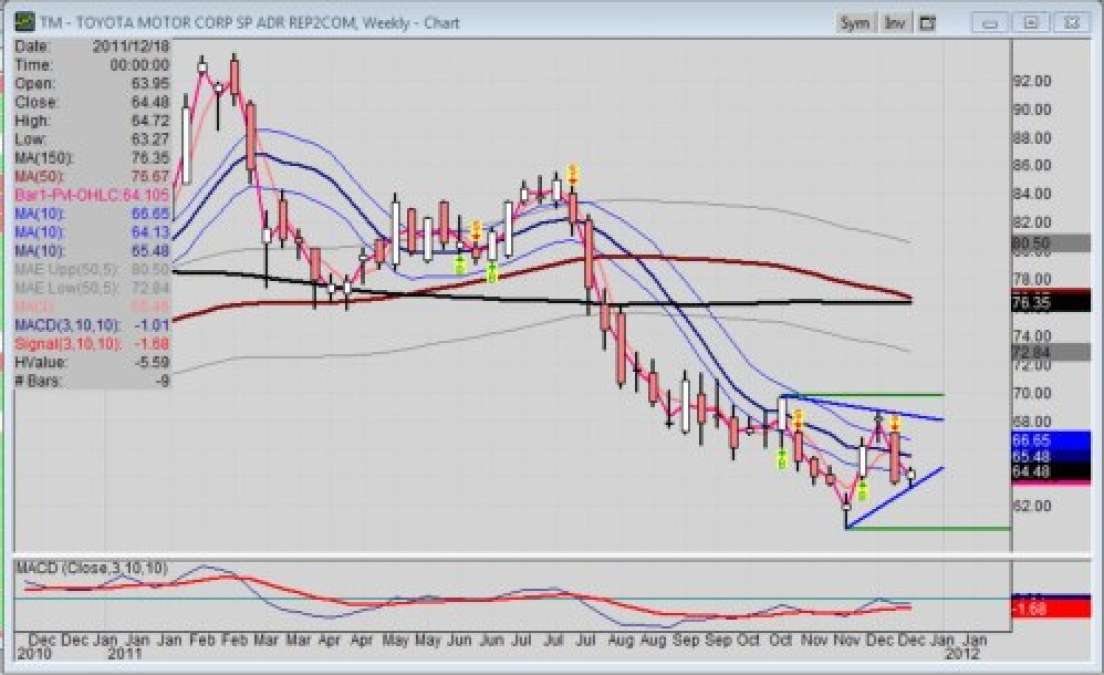Moody's Investors Service today affirmed the Aa3 senior unsecured long-term ratings of Toyota Motor Credit Corporation (TMCC) and its supported subsidiaries and changed the outlook to negative from stable.
For the record, Toyota Motor Corporation is headquartered in Toyota City, Japan, and is Japan's largest automotive manufacturer. TMCC, on the other hand, is headquartered in Torrance, California, and is Toyota's US captive finance company.
Anytime a credit rating agency like Moody’s resets a rate, the news alone often will affect a stock with volatile pricing for a few days. Not so with Toyota stock; then again, this is pre-holiday trading. Still, mart traders always search for the underlying reason behind the rating.
In the case of TMMC, which is the financial arm for Toyota, the rating is based on methodologies such as Analyzing The Credit Risks Of Finance Companies published in October 2000, and Rating Non-Guaranteed Subsidiaries: Credit Considerations In Assigning Subsidiary Ratings In The Absence Of Legally Binding Parent Support published in December 2003. All this per Moody’s.
Nonetheless, there is often a collateral reason not readily or openly mentioned. I had heard via the CNBC reporting of Phil LeBeau that the appreciation of the Yen would affect the profits in 2012, which Toyota noted last night in Japan that they would improve significantly post floods in Indonesia.
Fact is, Toyota has enjoyed a depreciating Yen for many decades. So, any appreciation means any profits returning to Japan from America, for example, would result in a lesser amount due to the Yen’s appreciation against the US dollar.
Toyota Stock Chart
Toyota stock has reflected the negative effects of the earthquake and tsunami in Japan, and the floods at plants in Indonesia.
Looking at the price-time chart, I find TM with major swing resistance at 68.66; and the major swing support at the new 52-week low of 60.37 of 11/23.
Look again at the weekly chart and notice the two converging blue lines. These are trend lines that have defined a wedge pattern. This means TM is in a state of uncertainty. It is neither rising or falling with any significance. That also means that pressure is building for a breakout to the upside or the downside.
I’ll let the fundamentals help you decide which direction. Be assured, though, the negative news out of Europe has major bearish weight these days on everyone, especially auto companies.
While the holiday volume is significantly lower, we may not see any decision one way or the other until traders return after New Years.
-----------------------
Full Disclosure: At time of publication, Sherosky, creator of the auto sector charts for TN, is neither long or short with the mentioned stocks or futures, though positions can change at any time. None of the information in this article constitutes a recommendation, but an assessment or opinion.
-----------------------
About the Reporter: After 39 years in the auto industry as a design engineer, Frank Sherosky now trades stocks, futures and writes articles, books and ebooks like, "Perfecting Corporate Character," "Awaken Your Speculator Mind", and "Millennial World Order" via authorfrank.com. He may be contacted here by email: [email protected] and followed in Twitter under @Authorfranks
________________________________________________
Additional Reading:
G-Oil sponsors TriStar Motorsports Toyota Camry team for 2012 NASCAR Nationwide Series
GM and J.D. Power attempt to understand the why behind Chevy Cruze sales
GM CEO Akerson dismisses price factor with building 60,000 Chevy Volts in 2012
Auto Sector Stocks: investor resolution ideas for 2012
Corporate culture as important as innovation per Booz & Company





